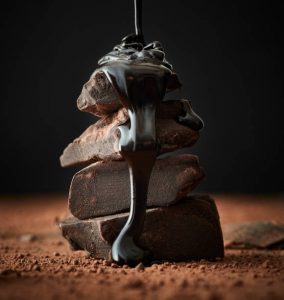
“Sugar free chocolates” sounds like an oxymoron, but it’s a booming product category in part because diabetes. Is one of the fastest growing chronic diseases in America. But do these products really taste like chocolate? And just how healthful are they?

To get some answers, WebMD asked a panel of testers to sample several brands of sugar free chocolates. And we asked a couple of experts for details on how sugar free chocolates are made, and their potential benefits.
To sweeten sugar free chocolates, most companies use maltitol, a sugar alcohol that is 90% as sweet as sugar (“sugar alcohol” is a somewhat misleading term, as these are neither sugar nor alcohol).
This type of sugar replacer (a group that also includes sorbitol, xylitol, mannitol, and isomalt) is particularly helpful to people with diabetes, because only a portion of it is digested and absorbed. And the part that is absorbed through the intestinal tract is absorbed slowly, so there’s a relatively little rise in blood sugar.
Kristen McNutt, PhD, JD, nutrition communications consultant to isomalt maker Palatinit, says sugar alcohols give the taste of sugar with only half the calories. Further, she says, they don’t cause cavities, and don’t cause your blood glucose to go up as high as it would if you ate sugar.
“The technology has improved with these sugar replacers and now they taste better, too,” says McNutt.
‘Sugar Free’ Doesn’t Mean ‘Fat Free’
Its sweetness, however, is only one reason the taste of chocolate appeals to so many of us. The other is cocoa butter. And because cocoa butter is rich in saturated fat, so are many of these sugar free products.
For example, if you enjoy half a sugar-free Yamate Chocolatier milk chocolate bar, you’ll be getting 200 calories, 17 grams of fat, and 10 grams of saturated fat. On the upside, though, you’ll get 4 grams of fiber and 0 grams of sugars (15 grams of maltitol).
Five pieces of Russell Stover sugar free chocolates Candy Miniatures add up to 190 calories, 14 grams of total fat, 9 grams of saturated fat, 2 grams of fiber, and 0 grams sugar (20 grams sugar alcohol).
The lesson here: It’s essential to watch your portions of these treats.

As for calories, the good news about sugar free chocolates is that there are calorie savings. The bad news is that it isn’t an impressive amount.
For example, a 40-gram serving of Dove sugar free chocolates has 190 calories, while the same amount of regular milk chocolate totals around 210. The difference – 20 calories — doesn’t sound like much. But if you replace the regular candy with the sugar-free version every day, you could save 140 calories a week, and 560 per month.
Side Effects
Here’s another reason to make sure you enjoy these sweets in moderation. In fine print on most packages of sugar-free chocolate is a warning: “Excessive consumption may cause a laxative effect.”
This is thanks to the part of the sugar alcohol that isn’t absorbed. It goes through the intestinal tract and gets digested by bacteria of the gut. Discomfort ranging from gas to diarrhea can result — depending on how much of the sugar free chocolates you consume and your individual intestinal tract.
“The sugar free chocolates have definitely been helpful for my clients,” says Tamara James RN, CDE, diabetes educator for the University of California-Davis Medical Center. “But they don’t realize that too much of it will cause them intestinal problems.”
The key to avoiding discomfort: “Just don’t pig out on it,” says McNutt.
The American Dietetic Association advises that more than 50 grams of sorbitol. 20 grams of mannitol per day can cause diarrhea. You can tell how much sugar alcohol is in a serving of each sugar free chocolates
Chocolate Taste Test
Health considerations aside, the real question many of us have is this. Can the taste of sugar-free chocolates compare to the real thing?
To get the answer, WebMD gathered samples of several brands of sugar free chocolates and assembled a team of 10 tasters that included teens, people with diabetes, people trying to shed extra pounds, and people who just love chocolate. Passive income
These products came from chain drugstores, Whole Foods markets, and Godiva chocolate stores.
Sugar-free Dark chocolate can be a healthy addition to your daily diabetic regimen. Unsweetened chocolate or sugar-free chocolate is the best option for diabetics, especially those made with 90% or 99% cacao. Cocoa seeds are the main ingredient in chocolate.
These seeds are low in Glycemic Index, and do not have any adverse effects on blood sugar levels. This includes milk solids and sugars as well as cocoa liquors and cocoa butter. Dark chocolates usually have less sugar and more pure cocoa. It is important to choose dark chocolate. There are many options for dark chocolates: milk chocolates, sugared chocolates, and so on. They are more carbohydrate-rich than unsweetened dark chocolates.



